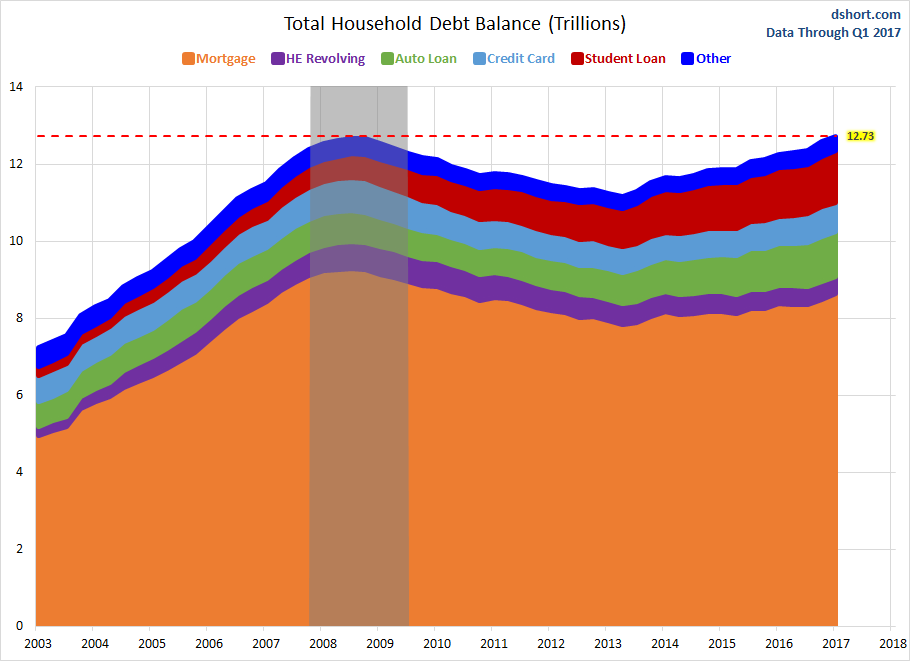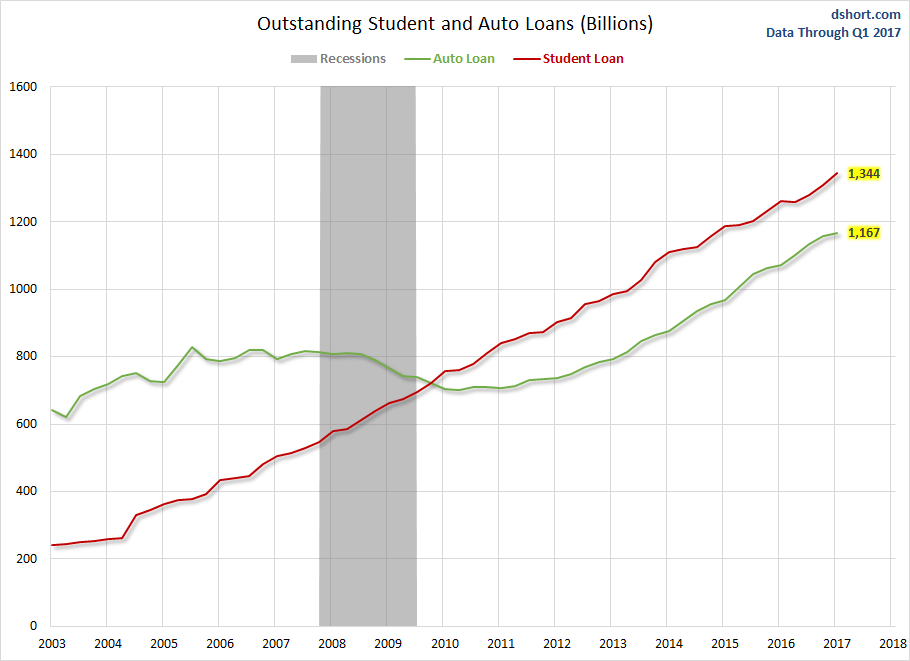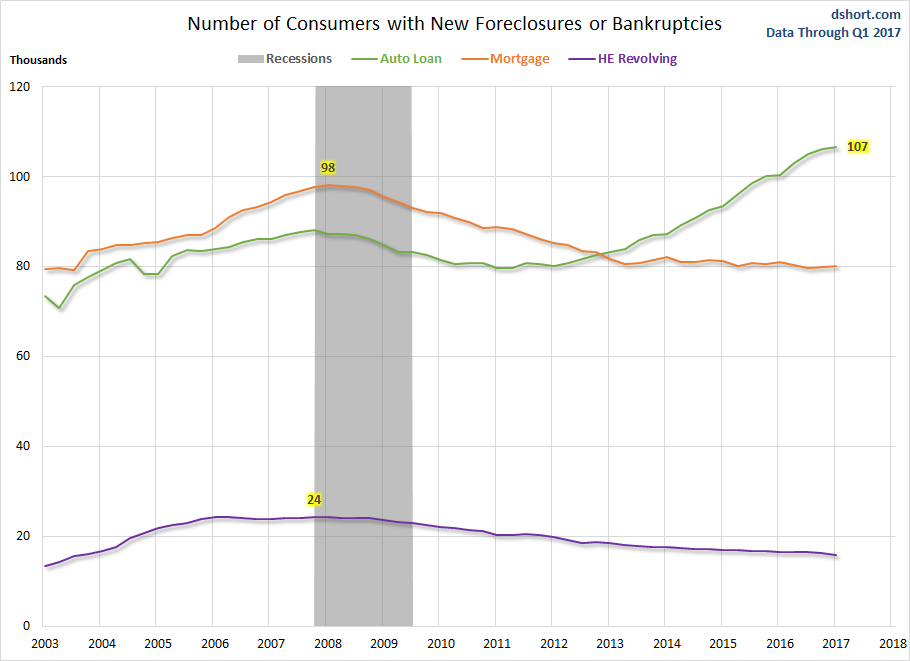As a result of the housing and mortgage crisis of the Great Recession, economists have been paying more attention to the liabilities portion of household balance sheets. Among the New York Federal Reserve Board's many economic reports is the Household Debt and Credit report, which is released quarterly with data going back to 2003.
Data is collected through the NY Fed's Consumer Credit Panel which is constructed from a nationally representative random sample of Equifax credit report data resulting in a sample size of over 40 million individuals quarterly. Here is some background on the report from the NY Fed:
The large increases in consumer debt and defaults—of mortgage debt in particular—during the Great Recession highlighted the importance of understanding the liabilities reflected on household balance sheets. To that end, one of the CMD’s large data collection projects is the New York Fed Consumer Credit Panel, which is constructed from a nationally representative random sample of Equifax (NYSE:EFX) credit report data. Analysis of this data set is regularly reported in the CMD’s Quarterly Report on Household Debt and Credit. The data set can be used to calculate national and regional aggregate measures of individual- and household-level credit balances, and delinquencies by product type. The Consumer Credit Panel also provides new insights into the extent and nature of heterogeneity of debt and delinquencies across individuals and households.
The latest household debt for Q1 2017 was up 1.2% from Q4 and currently at $12.73T, exceeding the 2008 Q3 peak of $12.68T. Here is an excerpt from the latest release:
Aggregate household debt balances increased in the first quarter of 2017, for the 11th consecutive quarter, finally surpassing the 2008Q3 peak of $12.68 trillion. As of March 31, 2017, total household indebtedness was $12.73 trillion, a $149 billion (1.2%) increase from the fourth quarter of 2016. Overall household debt is now 14.1% above the 2013Q2 trough. Mortgage balances, the largest component of household debt, increased again during the first quarter. Mortgage balances shown on consumer credit reports on March 31 stood at $8.63 trillion, an increase of $147 billion from the fourth quarter of 2016. Balances on home equity lines of credit (HELOC) declined by $17 billion and now stand at $456 billion. Non-housing balances were mixed in the first quarter. Auto loans and student loan balances grew, by $10 billion and $34 billion respectively, while credit card balances declined by $15 billion. Read more
The chart below shows total debt balance nation-wide by composition in trillions of dollars. The current total is $12.73T, surpassing the last peak in 2008. Notice that even though the current Total Household Debt is greater than it's 2008 high, mortgage debt is still currently lower than during the recession. The student and auto loans, however, have been on the rise.

The next chart drills down into student loan debt and auto loans. It's no surprise the Student Loans have been on the rise.

Below is a chart showing the number of consumers with new foreclosures and bankruptcies. Notice the spike in Mortgage foreclosures during the Great Recession and the gradual increase in Auto Loan foreclosures since 2013.

Check back next quarter for the Q2 update.
